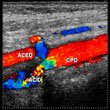
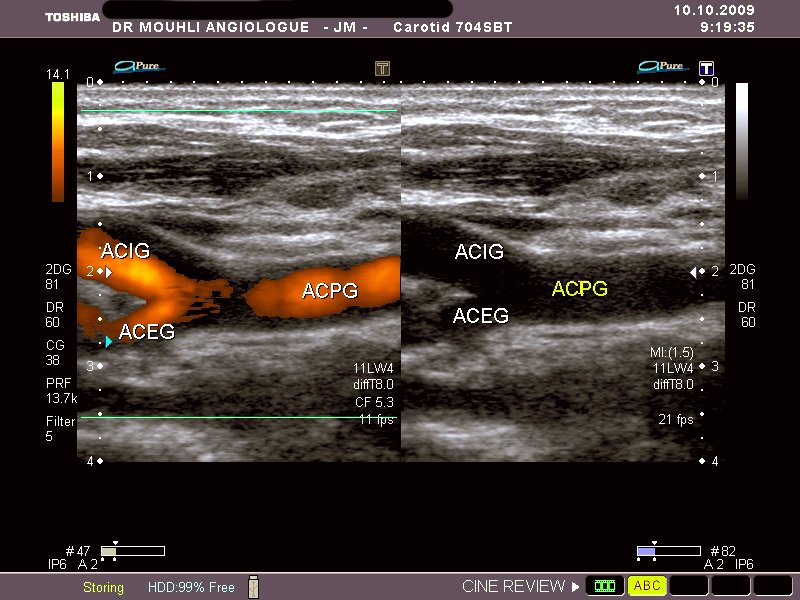
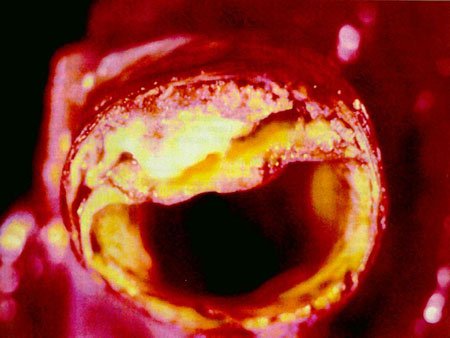

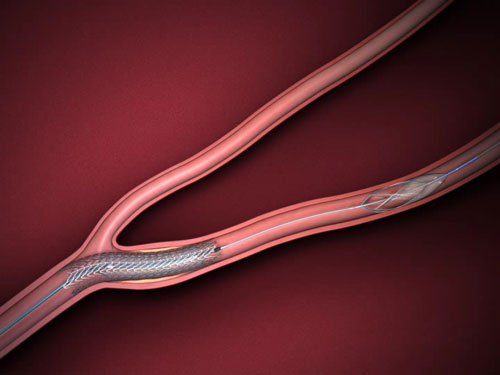

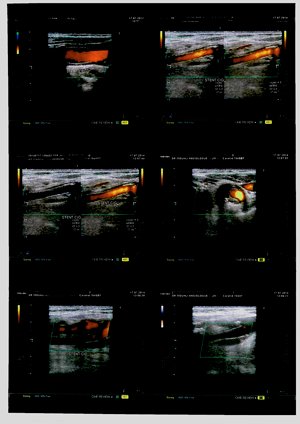
{AR-youtube width= »100% » height= »500″}watch?v=wY3fMI7LcCY{/AR-youtube}
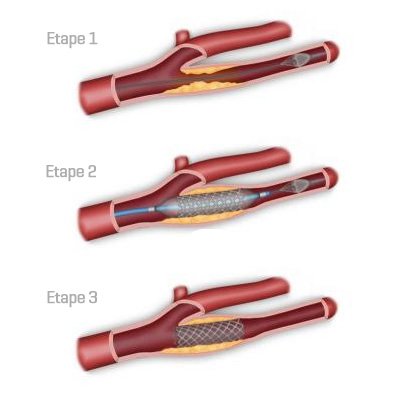
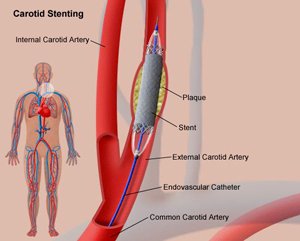
{AR-youtube width= »500″ height= »500″}watch?v=LQne1SILsVk{/AR-youtube}
{AR-youtube width= »100% » height= »500″}watch?v=uG9eDdOEC4U{/AR-youtube}
{AR-youtube width= »1000″ height= »600″}watch?v=uG9eDdOEC4U{/AR-youtube}
STENTING CAROTIDIEN
Les sténoses carotidiennes représentent une cause majeur d’accident ischémique et vasculaire cérébral (AIT et AVC)
5à 10% des personnes de plus de 60ans
20à 50% des personnes artéritique et athéromateux et coronariens
On dénombre 30000 à 40000 AIT en France
La décision d’intervenir sur trois critères :
Clinique
Plaque, sténose, dissection, compression externe
Degré de sténose
Symptomatique ou non
Risque thérapeutique
Anatomie : caractéristique morphologique, hémodynamique, plaque (emboligéne, hématome sous plaque, echogénicité, plicatures, malformations, anevrismale, vol artériel)
Hémodynamique : vitesse
Facteurs de risques
Imagerie médicale : Echodoppler, angio scanner, AngioIRM, artériographie))
ANATOMIE
Le degré de sténose
La mesure de la sténose est différente en Europe (ECST) et aux USA (NASCET, ACAS)
En Europe
ECST sténose symptomatique diamètre =Sténose /diamètre estimé du bulbe carotidien
Aux USA NASCET : diamètre sténose /diamètre mesuré de la carotide interne sous-jacente indemne
NASCET 30%
ECST 75%
Angioplastie transluminale percutanée et pose de stent pour la sténose de l’artère carotide
La sténose carotidienne, ou rétrécissement de l’une des principales artères qui transporte le sang vers le cerveau, peut entraîner un accident vasculaire cérébral (AVC). Le traitement standard consiste à éliminer le rétrécissement par une opération chirurgicale (endartériectomie carotidienne). Le rétrécissement peut également être traité par angioplastie transluminale au ballonnet. Cette intervention consiste à passer un tube fin (cathéter) via la peau (voie percutanée) dans le système artériel. Le cathéter comprend un ballonnet à son extrémité. Le cathéter est déplacé dans le système artériel jusqu’à ce que le ballonnet atteigne le rétrécissement artériel dans l’artère carotide dans le cou. Le ballonnet est brièvement gonflé. Cela étire l’artère (angioplastie) et réduit le degré de rétrécissement. Plus récemment, un dispositif métallique (stent) est inséré dans l’artère plus prévenir son rétrécissement après le retrait du cathéter. On appelle l’angioplastie et la pose de stent le traitement endovasculaire. Cette revue, qui incluait 12 essais portant sur 3 227 participants, a mis en évidence que l’opération pourrait être plus efficace que le traitement endovasculaire pour prévenir l’AVC précoce ou le décès, mais moins de complications neurologiques immédiates ont été rapportées avec le traitement endovasculaire qu’avec l’opération. Cependant, pendant le suivi, le risque d’AVC ou de décès était similaire après l’endartériectomie et après le traitement endovasculaire. Les artères traitées seraient plus susceptibles de se rétrécir après un traitement endovasculaire qu’après une endartériectomie carotidienne. D’autres essais randomisés sont nécessaires pour voir quels traitement sont les plus a même de protéger à long terme contre un AVC incapacitant ou un décès.
Percutaneous transluminal angioplasty and stenting for carotid artery stenosis
Carotid stenosis, or narrowing of one of the major arteries which carries blood to the brain, can cause a stroke. The standard treatment is to remove the narrowing by a surgical operation (carotid endarterectomy). The narrowing can also be treated by percutaneous transluminal balloon angioplasty. This involves passing a fine tube (catheter) through the skin (percutaneously) into the arterial system. The catheter has a small balloon at its tip. The catheter is moved through the arterial system until the balloon reaches the point of arterial narrowing in the carotid artery in the neck. The balloon is briefly inflated. This stretches the artery (angioplasty), and reduces the degree of narrowing. More recently a metal scaffolding (stent) is placed inside the artery to prevent it narrowing down again after the catheter is removed. Angioplasty and stenting are called endovascular treatment. This review, which included 12 trials involving 3227 participants, showed that surgery might be better than endovascular treatment in preventing early stroke or death, but there were fewer immediate neurological complications with endovascular treatment than with surgery. However, during follow up, the risk of stroke or death was similar after endarterectomy compared to endovascular treatment. Treated arteries may be more likely to narrow down after endovascular treatment than after carotid endarterectomy. Further randomised trials are needed to see which treatment yields the best chance of long-term freedom from disabling stroke or death.
Articles recommandés par Edmond Le Borgne










